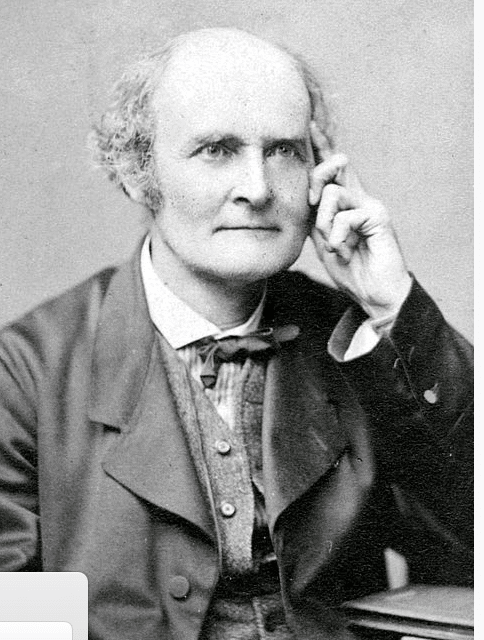
Arthur Cayley was born on August 16, 1821 in Richmond, England. He demonstrated a special aptitude for mathematics at an early age. attending King’s College School in London and at age 17 entered Trinity College, Cambridge, where he excelled in mathematics. By age 20 he was already demonstrating the beginnings of a prodigious career in mathematical output with the publication of three papers for the Cambridge Mathematical Journal inspired by his reading of Lagrange’s Mécanique analytique.
Cayley graduated from Cambridge, with the prestigious distinction as Senior Wrangler, but the small stipend available for academic pursuits prompted him to see a career as a lawyer. At the age of 25, he immersed himself in the study of law and was called to the bar in 1849. However, a brief trip to Dublin to attend Hamilton’s lecture on quaternions re-ignited his passion for mathematics and Arthur refocussed his attention to the study of mathematics. During the 1850’s he developed, in collaboration with J. J. Sylvester, the concept of matrices and the foundations of matrix algebra, applying it to the solutions of systems of linear equations.
In 1858, Cayley formulated what is now called “the Cayley-Hamilton theorem,” which states that every square matrix satisfies its own characteristic equation. This theorem has important implications in linear algebra and has applications in various fields. Connected with these investigations are the advances he made in developing the concept of a mathematical group, as a fundamental algebraic structure used in the study of symmetry and symmetrical transformations. Out of this work emerged the famous Cayley’s theorem, which asserts that every group can be represented as a group of permutations. This theorem was a fundamental result in the study of permutation groups and their relationship to other mathematical structures His work in this area influenced the development of abstract algebra and led to the emergence of modern algebraic geometry.
One of Cayley’s most significant contributions was his development of the theory of invariants, which identifies the properties that remain unchanged under certain transformations. This provided Einstein with the structure he needed to formulate his Special Theory of Relativity in which certain physical entities such as the speed of light remain invariant under the Lorentz transformations. His development of n-dimensional geometry also helped Einstein in his formulation of his Theory of General Relativity.
Arthur Cayley ranks with Euler and Cauchy as the most prolific mathematicians of all time. His Collected Mathematical Papers contains 966 articles which span thirteen 600-page volumes! These developments laid the groundwork for many areas of modern mathematics, and his influence continues to be felt in the field to this day. Throughout his productive career, Cayley was involved in various mathematical societies and played a role in promoting the study of mathematics in England. Cambridge University Press asked Cayley to edit his collective works for publication, and while editing these volumes, he succumbed on January, 26 1895, to an internal illness at the age of 73.
